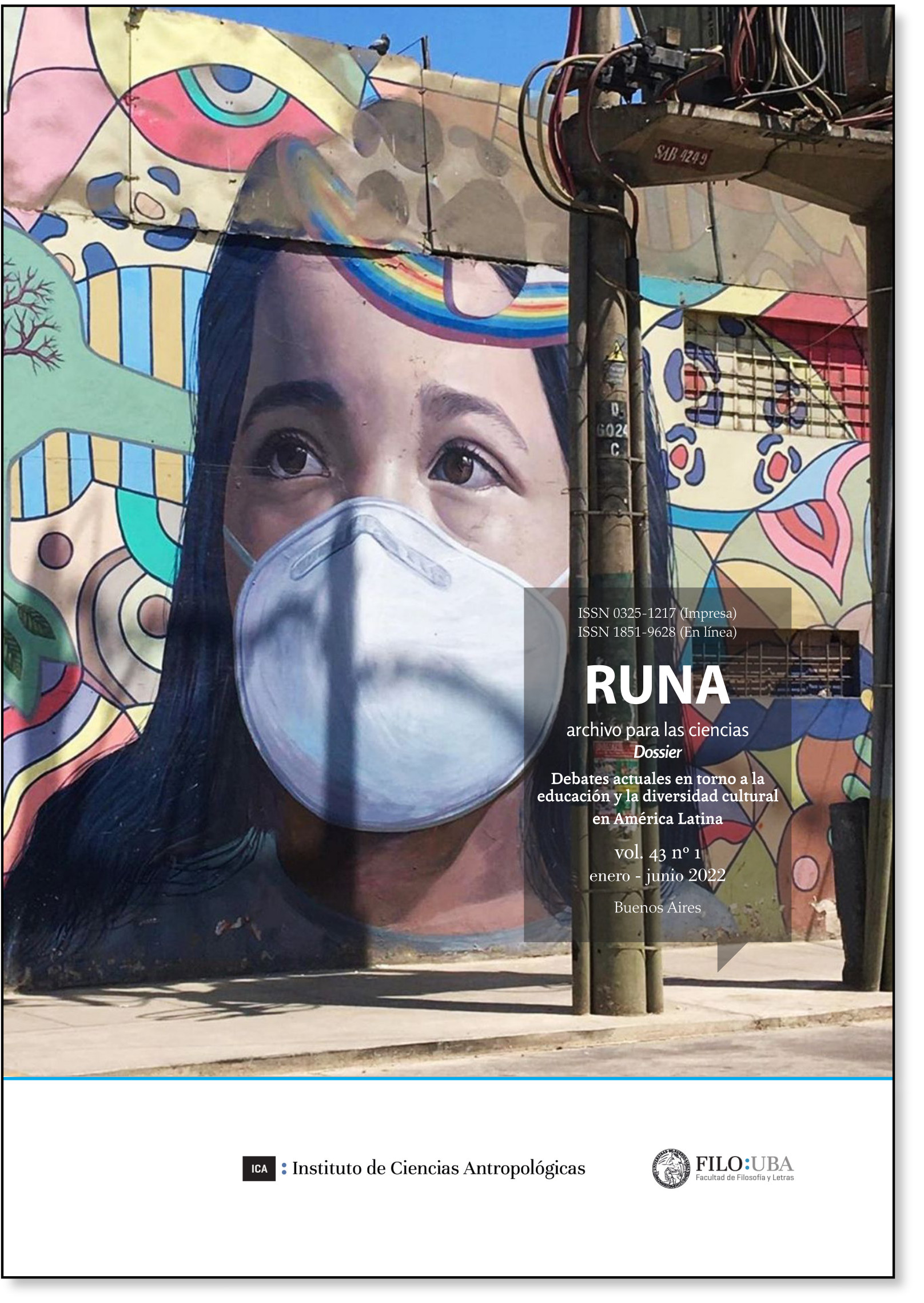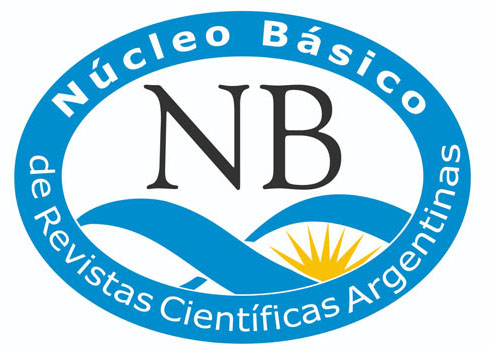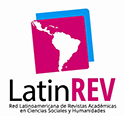"Quantify Wrong Living"
Reflections on the conduct of a survey on the violence suffered by a group of indigenous women in Argentina
Abstract
This article is a reflective exercise on a series of events that will take place to build a survey to alleviate the different types of violence stifled by a group of participants participating in the Second Parliament of Indigenous Mulheres for Bem. This meeting was held not in 2019 - in the province of Río Negro (Patagônia Argentina) - in which I participated as a collaborating anthropologist and feminist activist. This is how we present here visam barnacles to the importance of carrying out and testing ferraments that allowed us to address costumes and experiences, not just collaboratively with the social movements for which we think; but also trying to contribute to or ideal of an anthropology that posits to pay for the development of a critical thought capable of breaking the speeches of power given by two groups of four working groups.Downloads
References
Agamben, G. (2003). Homo sacer París: Éditions du Seuil.
Arfuch, L., Catanzaro, G. y Di Cori, P. (2002). Identidades, sujetos y subjetividades Buenos Aires: Prometeo.
Alcalá, P. R. (2006).Jóvenes, memoria y violencia en Medellín: una antropología del recuerdo y el olvido Colombia: Universidad de Antioquia.
Berlant, L. (1998). Intimacy: A special issue. Critical Inquiry, 24(2), 281-288.
Bourdieu, P. (2002). Lección sobre la lección Trad. T. Krauf. Barcelona: Anagrama.
Benjamin, W. (1991). El Narrador Madrid: Taurus.
Bleger, M. V. (2018). La opresión y la palabra. Formas de habitar el discurso feminista. actas IV Congreso de Estudios Poscoloniales y VI Jornadas de Feminismo Poscolonial “Cuerpos, imaginarios y procesos de racialización contemporáneos en el Sur”. 13, 14, 15 y 16 de noviembre. Buenos Aires, Facultad de Filosofía y Letras, Universidad de Buenos Aires.
Briones, C. (2013). Conocimientos sociales, conocimientos académicos: asimetrías, colaboraciones, autonomías.Colombia, Bogota. Universidad Libre de Berlin e Instituto Iberoamericano de Berlin
Butler, J. (2017). Cuerpos aliados y lucha política. Hacia una teoría performativa de la asamblea Bogotá, ed. Paidos/Planeta.
Carman, M y Gonzalez Carman, V. (2019) Los límites de la divergencia entre saberes populares y expertos. El debate en torno a la conservación del delfín Franciscana y las prácticas pesqueras sustentables. MANA; Año: 2020 vol. 3 p. 1 - 39
Carrasco, M. (2002). El movimiento indígena anterior a la reforma constitucional y su organización en el Programa de Participación de Pueblos Indígenas. En LLILAS Visiting Resource Professor Papers UT Faculty/Researcher Works. Disponible en http://hdl.handle.net/2152/4069
Chow, R. (2010). The Rey Chow Reader Nueva York: Columbia University Press.
Gwaltney, J. L. (Ed.) (1993). Drylongso: A self-portrait of black America Nueva York: The New Press.
Das, V. (2008). Sujetos del dolor, agentes de dignidad Universidad Nacional de Colombia. Facultad de Ciencias Humanas. Instituto CES.
De Sousa Santos, B. (2008). Do pós-moderno ao pós-colonial. E para além de um e de outro. Travessias, 6/7, 15-36.
Giddens, A. (1995). La teoría de la estructuración.entrevista) Cuadernos de Sociología, 6. Madrid.
Hale, C (2020). In praise of “reckless minds”: making a case for activist anthropology. InAnthropology put to work(pp. 103-127). Routledge.
Ministerio de Seguridad de la Nación. (2018). Informe de Femicidios de 2018 Subsecretaría de Estadística Criminal del Ministerio de Seguridad de la Nación, Observatorio de Femicidios del Defensor del Pueblo de la Nación. Disponible en http://www.dpn.gob.ar/documentos/Observatorio_Femicidios_-_Informe_Femicidios_2018_-_SSEC_OFDPN.pdf
Lassiter, L. (2005). Collaborative Ethnography and Public Anthropology.Current Anthropology,46(1), 83-106. https://doi.org/10.1086/425658
Leyva Solano, X. (2013). Y/osotras¿ Mi/nuestras Luchas Epistémicas Creativas?.Seminario Virtual Internacional (SVI) Creación de Prácticas de Conocimiento desde el Género, los Movimientos y las Redes de la RETOS Disponible en http://biblioteca.clacso.edu.ar/clacso/se/20180515110853/Practicas_Otras_2.pdf
Leyva, X., Alonso, J., Hernández, R. A., Escobar, A., Kohler, A., Cumes, A., ... & de Sousa Santos, P. D. B. (2015). Prácticas otras de conocimiento (s).Entre crisis, entre guerras, 3. Ed.Clacso https://doi.org/10.2307/j.ctvn96g99
Massey, D., Research Group, H. G., Bond, S. y Featherstone, D. (2009). The possibilities of a politics of place beyond place? A conversation with Doreen Massey. Scottish Geographical Journal, 125(3-4), 401-420.
Mohanty, A. K., Misra, M. y Drzal, L. T. (2002). Sustainable bio-composites from renewable resources: opportunities and challenges in the green materials world. Journal of Polymers and the Environment, 10(1-2), 19-26.
Pita, M. V. (2010). Formas de morir y formas de vivir: el activismo contra la violencia policial. Buenos Aires: Editores del Puerto.
Rappaport, J. (2007). Más allá de la escritura: la epistemología de la etnografía en colaboración. Revista Colombiana de Antropología, 43(enero-diciembre), 197-229.
Rappaport, J. (2015) Introducción a la edición especial de Tabula Rasa: Orlando Fals Borda e Historia doble de la Costa.Tabula Rasa, (23), 11-21.
Rappaport, J. (2017). Participation and the work of the imagination: A Colombian retrospective. InThe Palgrave international handbook of action research(pp. 147-159). Palgrave Macmillan, New York.
Ricoeur P. (1986) Life: A Story in Search of a Narrator. In: Doeser M.C., Kraay J.N. (eds) Facts and Values. Martinus Nijhoff Philosophy Library, vol 19. Springer, Dordrecht. https://doi.org/10.1007/978-94-009-4454-1_9
Rodríguez, M. E. y Michelena, M. (2018). Memorias charrúas en Uruguay: Reflexiones sobre reemergencia indígena desde una investigación colaborativa. Revista Abya Yala - revista sobre acesso à justiça e direitos nas Américas 2 (2): 408-420Dossier Memórias indígenas: silêncios, esquecimentos, impunidade e reivindicação de direitos e acesso à justiça, Verdum R. y Ramos AM (Eds.).
Scheper-Hughes, N. (1995). The primacy of the ethical: Propositions for a militant anthropology. Current Anthropology , 36(3), 409-440.
Segato, R. L. (2013). Las nuevas formas de la guerra y el cuerpo de las mujeres. Sociedade e Estado, 29(2), 341-371. doi: https://dx.doi.org/10.1590/S0102-69922014000200003
Spivak, G. C. (1988). Can the subaltern speak? Basingstoke: Macmillan.
Trouillot, M.-R. (1995) The Power in the Story (Cap. 1). En Silencing de Past. Power and the Produccion of History Pp. 1-30. Boston: Beacon Press.
Trouillot, M.-R. (1995) The Power in the Story Unthinkable History (Cap. 3) En silencing the Past. Power and the Produccion of History Pp. 70-107. Boston: Beacon Press .
Vasco Uribe, L. G. (2002). Entre selva y páramo, viviendo y pensando la lucha india.Bogotá: Instituto Colombiano de Antropología e Historia
Vasco Uribe, L. G., Hurtado, A. D., & Aranda, M. (1993). En el segundo día, la Gente Grande (Numi sak) sembró la autoridad y las plantas y, con su jugo, bebió el sentido.Encrucijadas de Colombia amerindia Ed.Instituto Colombiano de Antropología, Colcultura. 9-48.

Runa, archivos para las ciencias is a publication of the Instituto de Ciencias Antropológicas, Facultad de Filosofía y Letras, Universidad de Buenos Aires and is distributed under a Creative Commons Attribution 4.0 International License.
Runa maintains its commitment to the policies of Open Access to scientific information, considering that both scientific publications and publicly funded research should circulate on the Internet freely, free of charge and without restrictions.
The contents and opinions expressed in published articles are the sole responsibility of their authors.



















